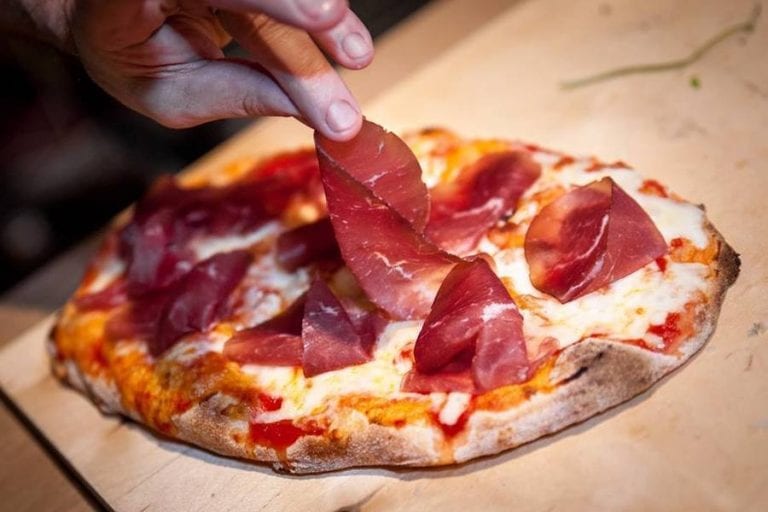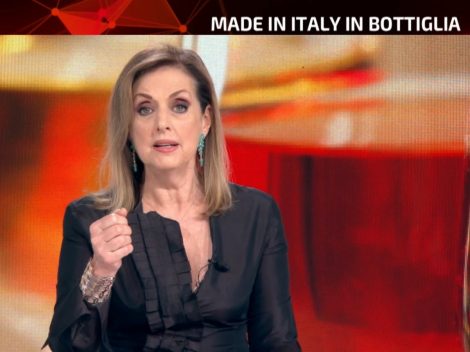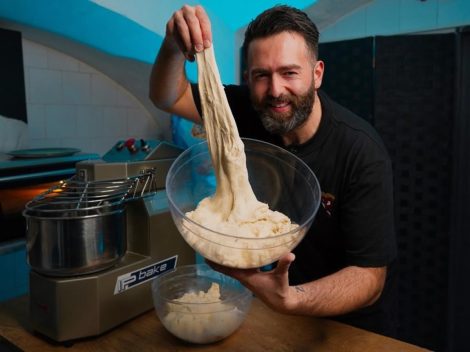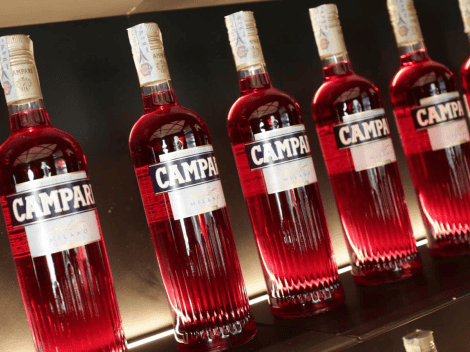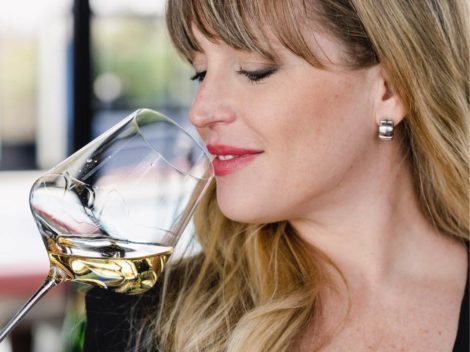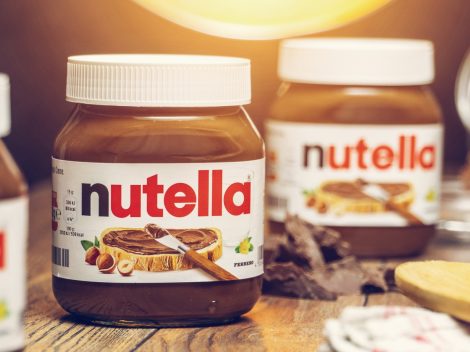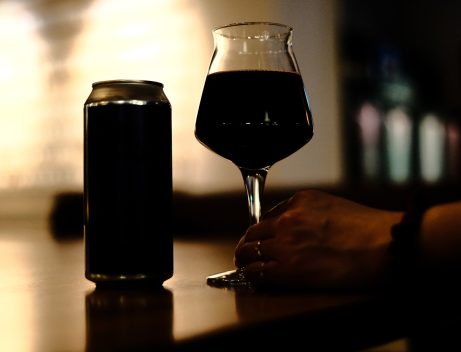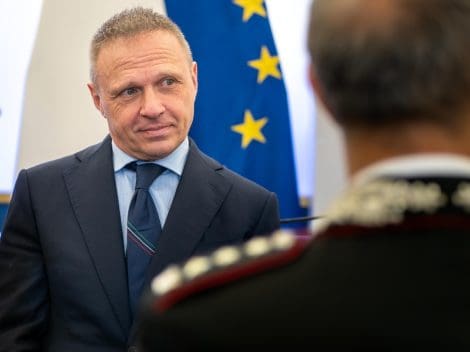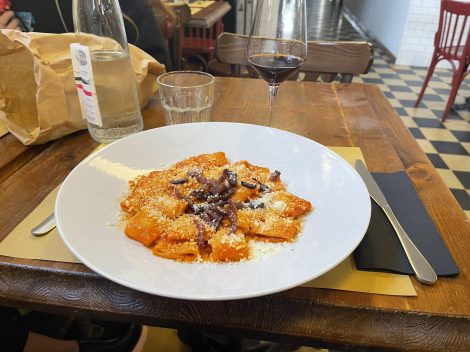We went back to Moscow for the Tre Bicchieri event, which took place on November 23 in the halls of the DI Telegraph, the symbol of Russian government telecommunication, transformed today into a co-working space. We opened the event with the awards for the best Italian restaurants in the city as selected by our Top Italian Restaurants guide.
The new generation of Italian chefs
Necessity is the mother of invention, so there’s no lack of creativity or spirit of adaptation. “We try to reproduce Italian flavors and our sensibility with what we find here in Moscow. Some products come in anyway. In other cases, we choose among local providers. For example, we can find excellent game from Crimea,” Andrea Impero, from the Ciociaria, told us. At 27, he is the head of Maritozzo, one of the most interesting Italian places in the city, opened in October, 2016. On the ground floor is a bar and food shop, on the floor above a beautiful, spacious open kitchen and bakery. “I put bread at the center of the experience. The acidity of the mother yeast, the Umbrian oil that oozes from the warm focaccia, casatiello from Campania… I want to reproduce the flavors of home.” We tasted excellent beef tongue cooked for 48 hours and served with an assertive green sauce and a Jerusalem artichoke mayonnaise. The Carbonara, in the absence of pecorino cheese and guanciale, offered instead a triple dose of savory flavor– sea urchins, caviar and bottarga. Then came grilled meat and an unmissable dessert, a maritozzo (brioche). A Due Gamberi rating to start with, plus the Surgiva Taste&Design award: a good foundation for a future as the city’s benchmark Italian restaurant.
Best pizza in Moscow
As the best pizzeria, with a rating of Due Spicchi, two slices, we named Pinzeria by Bontempi. Its iconic location is right in front of the golden cupola of the Cathedral of Christ the Savior. “My greatest satisfaction is seeing Russians finish a pizza per person. Until a short time ago, they shared one among six people,” commented Valentino Bontempi. He arrived in Moscow in 2005. His formula is a tried and true one, and much imitated. The dough is low, fragrant, and slow-rising, topped with quality ingredients. He also serves salads, good pasta, has a well-supplied wine cellar and popular pricing. He opened a second location, and the two together sell 16,000 pinze (a type of lighter pizza) per month. “What do Russians like? They’re crazy about burrata. It’s incredible. They can eat a whole one just as antipasto.” Valentino is planning to put eating places inside the city’s food markets and is thinking about a format that’s open all night. What about beverages? “Two bottles for a couple is normal here. That’s why I keep mark-ups below average.” Since the beginning of the embargo, the Russian companies that produce cheese and cured meats have increased exponentially, turning out everything from burrata to prosciutto. “Italian entrepreneurs are exporting machinery and know-how. The quality of local products has much improved,” Valentino explained.
The quality of the ingredients
“I prepare my own cured meats. I have a room with special lighting to grow friarelli greens,” Emanuele Mongillo told us. He is the Campania soul of Balzi Rossi (a satellite of the historic restaurant in Ventimiglia), the restaurant won our maximum score of Tre Forchette. His is a creative cucina. His sensibility about pasta is noteworthy, although the ambiance is that of a Russian night club – gaudy is an understatement. We tasted an outstanding tuna tartare on tomato gelatin, bread and celery root chips, spaghetti with crab on broccoli and lime puree. The quality of the ingredients was uncompromising, the plates decorated elegantly, and the kitchen staff was all Italian. A new Italian raw bar serves carpaccio and tartare. Dessert was an excellent babà.
Nino Graziano, the pioneering Italian chef abroad
How has Italian restaurant food evolved in Moscow? We asked Nino Graziano, who has been in Moscow for 13 years and is one of the pioneering Italian chefs abroad. His restaurant, Semifreddo – resident chef Luca Verdolini – was awarded Due Forchette. “When I first came to Moscow, the most complex Italian dish was pasta with cherry tomatoes and basil. Now the level of Italian cucina here, as in the rest of the world, has gone way up. The credit goes to the many chefs who have publicized and used top quality products. All around the world there are very talented young chefs who completely dedicate themselves to Italian cucina.” Among the Russians’ favorite dishes, he mentioned filleted fish and a clear preference for dried pasta over fresh. But the effects of the embargo persist. “Very few new Italian restaurants are opening compared to the past. Now two or three a year, a twentieth compared to before. Georgian, Panasian, and many examples of fusion restaurants are popping up,” he concluded.
Russian economy
Syr, the historic restaurant of Mirko Zago, a chef from Val d’Aosta, and Scrocchiarella, a new opening that focuses on pizza by the slice, complete the picture of the recipients of our guide’s awards. After two very difficult years, the Russian economy has revved up, and with it, Italian exports. In the first eight months of 2017, Italian agricultural exports to Russia grew 30%, while wine increased 45% in value (138 million euros), led by spumante, according to the data from Roberto Cafiero in the ICE office in Moscow. The food embargo is operative until December 31, 2018. Forbidden imports include meat, fish, fruit, vegetables and dairy products.
Prosecco leads sales of Italian wine
Prosecco DOC was once more the subject of a seminar in which seven wineries selected by the Consorzio di Tutela participated. The sparkling wines of this denomination powered increased Italian wine sales in Russia, with Prosecco imports up 55% in value in the first 8 months of 2017. During the tasting, with producers and winery representatives present, various themes emerged. Above all, the demand is for reduced sweetness, even in a market where soft sparkling wines were always extremely popular. “They come to the counter asking for Brut, a clear change from the past,” said Giovanni Iaconis from the organic winery, Jara.
